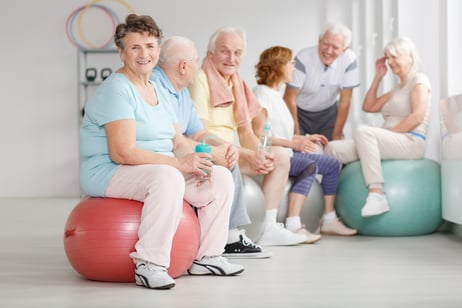 As we age, staying active is crucial for maintaining our physical health, but an often-overlooked aspect of well-being is the importance of social interactions. For active older adults, combining social activities with recreational activities can significantly enhance quality of life. Recreational activities can be essential to your health in many ways, including the following:
As we age, staying active is crucial for maintaining our physical health, but an often-overlooked aspect of well-being is the importance of social interactions. For active older adults, combining social activities with recreational activities can significantly enhance quality of life. Recreational activities can be essential to your health in many ways, including the following:
Enhances Mental Health – Social interactions can greatly reduce feelings of loneliness and isolation, common issues among older adults. Engaging in recreational activities with peers provides a sense of community and belonging. This social engagement can lead to lower levels of stress, anxiety, and depression. Studies have shown that older adults who maintain strong social connections have a lower risk of cognitive decline and dementia.
Boosts Physical Health – When recreation is done in a group setting, it often becomes more enjoyable, encouraging consistent participation. Group activities like walking clubs, dancing, yoga classes, or team sports not only improve physical health but also increase adherence to regular exercise routines. Social support can motivate older adults to push themselves a bit more, leading to better overall fitness.
Improves Cognitive Function – Engaging in social recreational activities stimulates the mind and keeps it active. Activities like card games, board games, or even group classes for learning new skills (e.g., painting, crafts, or a new language) can help improve memory, problem-solving abilities, and other cognitive functions. The mental stimulation from these activities is essential for maintaining cognitive health as we age.
Fosters Emotional Well-being – Being part of a social group can provide emotional support, which is vital for handling life's challenges and changes, especially as we get older. Sharing experiences, laughter, and even challenges with friends can lead to stronger emotional resilience. The sense of companionship and the joy of shared experiences can enhance overall happiness and satisfaction with life.
Promotes Lifelong Learning – Participating in recreational activities often involves learning new skills or hobbies. This lifelong learning process is beneficial for keeping the brain sharp and engaged. Whether it's picking up a new sport, learning to play an instrument, or exploring new technologies, continuous learning fosters a sense of accomplishment and purpose.
Creates a Support Network – In later years, having a robust support network is invaluable. Regular social interactions through recreational activities help build and maintain your social network. Friends made through activities can offer practical support, companionship, and encouragement.
Encourages a Positive Outlook on Life – Regular participation in social recreational activities can significantly improve one’s outlook on life. Being active in a social environment creates opportunities for fun, laughter, and meaningful connections. This positivity can lead to a greater sense of overall well-being and a more optimistic view of aging.
Creating social interaction with recreational activities is vital for the holistic well-being of older adults. It enhances mental and physical health, fosters emotional support, and promotes a positive outlook on life. By staying socially active, older adults can enjoy a higher quality of life and maintain their independence and vitality for years to come. This month our client locations in senior living are engaging in programming centered around recreation and being social. Encourage your friends and fellow residents to get out there, join a group, make new friends, and keep moving!


 In the Active Aging community, group fitness is a large part of a resident’s daily life. Exercising solo and following a written workout plan doesn’t cut it for some residents. They need an extra motivational factor, such as being with a group and having someone instruct them step by step. Having friends around at all times is important to residents. It gives them a sense of security and accomplishment when they look in the mirror and see themselves exercising with close friends in the community.
In the Active Aging community, group fitness is a large part of a resident’s daily life. Exercising solo and following a written workout plan doesn’t cut it for some residents. They need an extra motivational factor, such as being with a group and having someone instruct them step by step. Having friends around at all times is important to residents. It gives them a sense of security and accomplishment when they look in the mirror and see themselves exercising with close friends in the community. Emotional
Emotional

